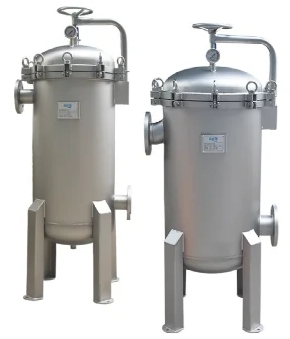Exploring the Features of Ultrasonic Defoaming Machines
In various industries, foam can be a persistent and troublesome issue. Whether it's in the production of beverages, chemicals, or even wastewater treatment, excessive foam can hinder efficiency and affect product quality. To combat this problem, ultrasonic defoaming machines have emerged as a powerful solution. In this article, we will delve into the features of these machines and how they contribute to effective foam control.
I. Understanding Ultrasonic Defoaming Machines
Ultrasonic defoaming machines utilize high-frequency sound waves to disrupt and eliminate foam. These machines consist of several key features that make them highly efficient and reliable in foam management.
A. Ultrasonic Transducers
At the heart of an ultrasonic defoaming machine are the ultrasonic transducers. These transducers convert electrical energy into high-frequency sound waves, typically in the range of 20 to 100 kHz. The transducers are strategically placed within the machine to ensure optimal coverage and effective foam disruption.
B. Tank Design
The tank design of an ultrasonic defoaming machine plays a crucial role in its functionality. The tank is typically made of stainless steel, which is resistant to corrosion and ensures longevity. The size and shape of the tank can vary depending on the application, allowing for customization to meet specific industry requirements.

II. Key Features of Ultrasonic Defoaming Machines
Ultrasonic defoaming machines offer a range of features that contribute to their effectiveness in foam control. Let's explore some of these features in detail:
A. Adjustable Power and Frequency
One of the notable features of ultrasonic defoaming machines is the ability to adjust the power and frequency of the sound waves. This flexibility allows operators to optimize the machine's performance based on the type and severity of the foam. By fine-tuning these parameters, the machine can effectively target and eliminate foam, regardless of its composition.
B. Temperature Control
Foam control can be influenced by temperature variations. Ultrasonic defoaming machines often incorporate temperature control mechanisms to ensure consistent performance. By maintaining a specific temperature range, these machines can effectively handle foam-related challenges in various environments.
C. Automatic Operation
To enhance convenience and efficiency, many ultrasonic defoaming machines feature automatic operation capabilities. This means that once the machine is set up and parameters are adjusted, it can operate independently, minimizing the need for constant monitoring. Automatic operation allows operators to focus on other tasks, increasing productivity and reducing labor costs.
D. Safety Features
Safety is a paramount concern in any industrial setting. Ultrasonic defoaming machines are equipped with various safety features to protect both the machine and the operators. These features may include temperature sensors, automatic shut-off mechanisms, and protective enclosures. By prioritizing safety, these machines offer peace of mind during operation.

III. Benefits of Ultrasonic Defoaming Machines
The features of ultrasonic defoaming machines translate into several significant benefits for industries dealing with foam-related challenges.
A. Improved Product Quality
Excessive foam can negatively impact the quality of products, such as beverages or chemicals. Ultrasonic defoaming machines effectively eliminate foam, ensuring consistent product quality. By removing foam, these machines contribute to better taste, appearance, and overall customer satisfaction.
B. Increased Efficiency and Productivity
Foam-related issues can slow down production processes and reduce efficiency. Ultrasonic defoaming machines address this problem by swiftly and effectively removing foam. With improved foam control, industries can experience increased production rates, reduced downtime, and enhanced overall efficiency.
C. Cost Savings
Foam-related challenges can result in increased costs, such as product wastage, equipment damage, and additional labor. Ultrasonic defoaming machines help mitigate these costs by efficiently managing foam. By reducing foam-related issues, industries can save money in the long run.
Conclusion
Ultrasonic defoaming machines offer a range of features that make them highly effective in foam control. With adjustable power and frequency, temperature control, automatic operation, and safety features, these machines provide industries with a reliable solution to combat foam-related challenges. The benefits of improved product quality, increased efficiency, and cost savings make ultrasonic defoaming machines a valuable asset in various industrial applications. Embracing this technology can revolutionize foam management and contribute to overall operational success.
Hangzhou Successful Ultrasound Equipment Co., Ltd. is a domestic professional manufacturer engaged in ultrasonic application research, development and production of high-power ultrasonic transducers, and is a national high-tech enterprise. The company's main products include transducers, ultrasonic drive power supplies, etc. As the core and key components of power supplies, these products are widely used in sonochemistry, plastic welding, metal welding, rubber cutting, non-woven fabric welding and other ultrasonic application industries.
If you are interested in our ultrasonic defoaming machines, please contact us. We will provide you with ultrasonic defoaming machines solutions.




